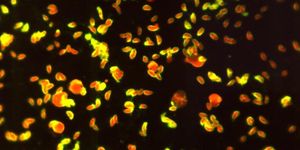Scientists have established the first searchable database of complex immune data, providing the foundations for a new era of cancer immunology research. The online platform unifies the ‘language’ used to describe the spectrum of phagocytic cell types and maps never-before-seen links between cellular biomarkers and disease.
Mononuclear phagocytes, or MNPs, are a diverse group of immune cells that include dendritic cells, monocytes, and macrophages. Among MNP’s main roles are to ‘chew up’ foreign material in the body and present the fragments to other immune cells to ignite an immune response against infection. These cells have been implicated as key players in many disease pathways such as cancer. Therefore, a clearer understanding of what these cells are and how they function can open up more possibilities in drug development.
The challenge for immunologists, however, is that until now, there has not been a standardized way of defining the multitude of different MNP subtypes. This lack of clarity has hampered progress in understanding exactly which MNP cells are involved in cancer, inflammation, and other conditions. For example, we know that the growth of tumors is influenced by a strong immune component, but it’s still unclear which macrophage subpopulations are involved.
To rise above this challenge, a team of scientists assembled with the goal of creating the first comprehensive database of MNP genetics using a standardized naming convention. Each MNP subpopulation profiled would also contain ‘tags’ linking it to specific functions in healthy and diseased states. This would result in the foundations of a searchable encyclopedia for immunologists, which could be fed additional datasets to expand our understanding of this dense network of cells.
The researchers drew upon a massive collection of 41 datasets containing information about 178,651 individual MNPs extracted from 13 different healthy and diseased tissue types. These were consolidated to generate a single-cell RNA compendium which they called the MNP-VERSE.
Using this publicly available tool, the team added an additional focus area, looking specifically at monocytes and macrophages and their role in cancer and inflammation. They found that a unique group of macrophages called IL41 cells accumulated on the outer surface of tumors. Instead of activating the immune system to fight tumors, these cells created an immunosuppressive environment, allowing the tumor cells to grow and flourish without immune intervention.
Together, the researchers see MNP-VERSE and the in-depth bioinformatics analyses they performed as a critical first step to developing next-generation therapies against difficult disease targets.









